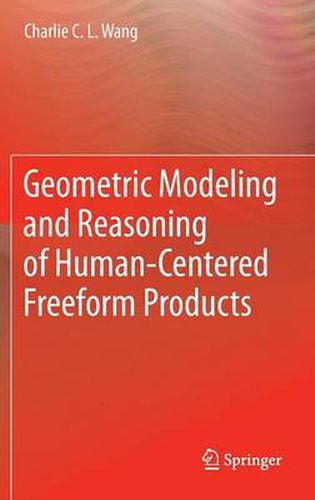Readings Newsletter
Become a Readings Member to make your shopping experience even easier.
Sign in or sign up for free!
You’re not far away from qualifying for FREE standard shipping within Australia
You’ve qualified for FREE standard shipping within Australia
The cart is loading…






This title is printed to order. This book may have been self-published. If so, we cannot guarantee the quality of the content. In the main most books will have gone through the editing process however some may not. We therefore suggest that you be aware of this before ordering this book. If in doubt check either the author or publisher’s details as we are unable to accept any returns unless they are faulty. Please contact us if you have any questions.
The recent trend in user-customized product design requires the shape of products to be automatically adjusted according to the human body’s shape, so that people will feel more comfortable when wearing these products. Geometric approaches can be used to design the freeform shape of products worn by people, which can greatly improve the efficiency of design processes in various industries involving customized products (e.g., garment design, toy design, jewel design, shoe design, and design of medical devices, etc.). These products are usually composed of very complex geometric shapes (represented by free-form surfaces), and are not driven by a parameter table but a digital human model with free-form shapes or part of human bodies (e.g., wrist, foot, and head models).
Geometric Modeling and Reasoning of Human-Centered Freeform Products introduces the algorithms of human body reconstruction, freeform product modeling, constraining and reconstructing freeform products, and shape optimization for improving the manufacturability of freeform products. Based on these techniques, the design automation problem for human-centered freeform products can be fundamentally solved.
Researchers and developers working on problems of automatic designing individually customized products can use this book as a reference, and it can also be used in courses in computer-aided product design at the graduate level.
$9.00 standard shipping within Australia
FREE standard shipping within Australia for orders over $100.00
Express & International shipping calculated at checkout
This title is printed to order. This book may have been self-published. If so, we cannot guarantee the quality of the content. In the main most books will have gone through the editing process however some may not. We therefore suggest that you be aware of this before ordering this book. If in doubt check either the author or publisher’s details as we are unable to accept any returns unless they are faulty. Please contact us if you have any questions.
The recent trend in user-customized product design requires the shape of products to be automatically adjusted according to the human body’s shape, so that people will feel more comfortable when wearing these products. Geometric approaches can be used to design the freeform shape of products worn by people, which can greatly improve the efficiency of design processes in various industries involving customized products (e.g., garment design, toy design, jewel design, shoe design, and design of medical devices, etc.). These products are usually composed of very complex geometric shapes (represented by free-form surfaces), and are not driven by a parameter table but a digital human model with free-form shapes or part of human bodies (e.g., wrist, foot, and head models).
Geometric Modeling and Reasoning of Human-Centered Freeform Products introduces the algorithms of human body reconstruction, freeform product modeling, constraining and reconstructing freeform products, and shape optimization for improving the manufacturability of freeform products. Based on these techniques, the design automation problem for human-centered freeform products can be fundamentally solved.
Researchers and developers working on problems of automatic designing individually customized products can use this book as a reference, and it can also be used in courses in computer-aided product design at the graduate level.